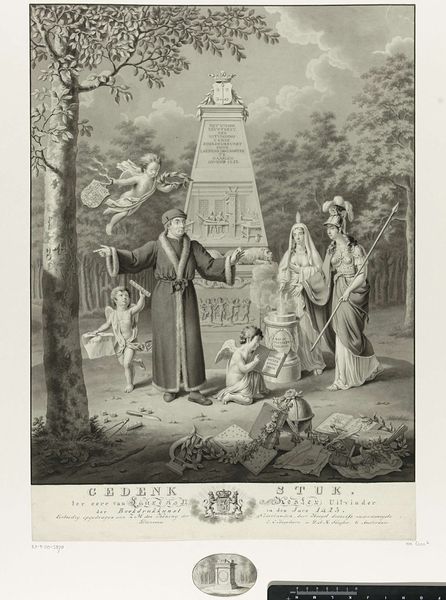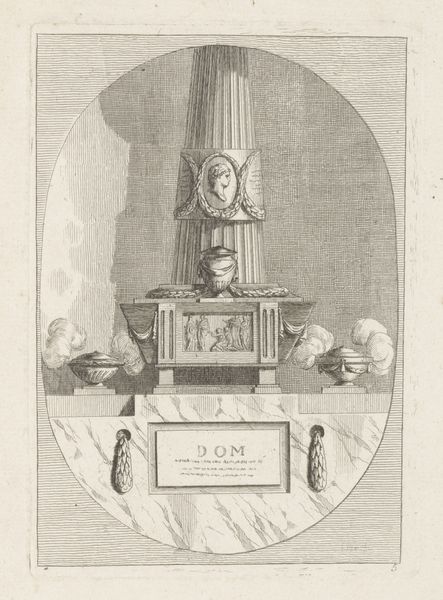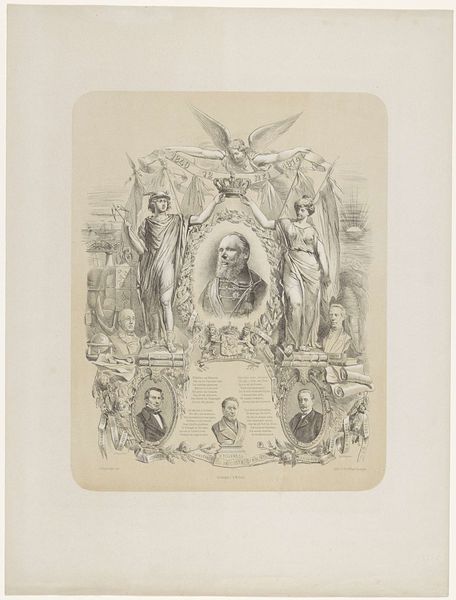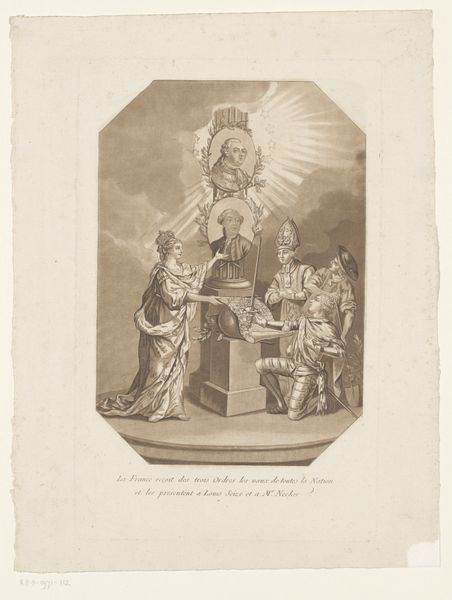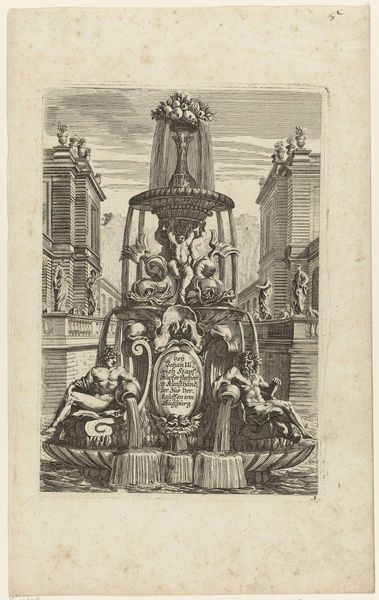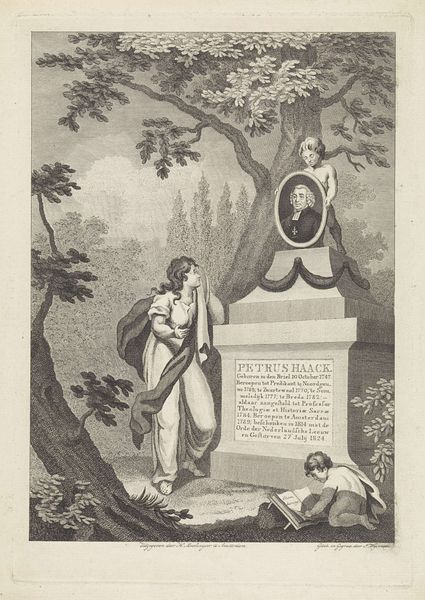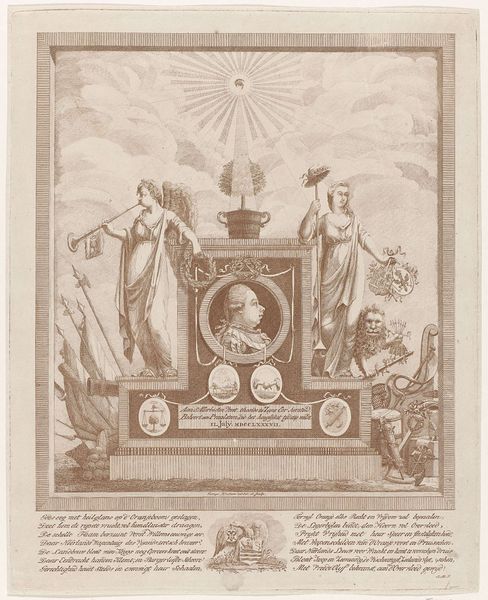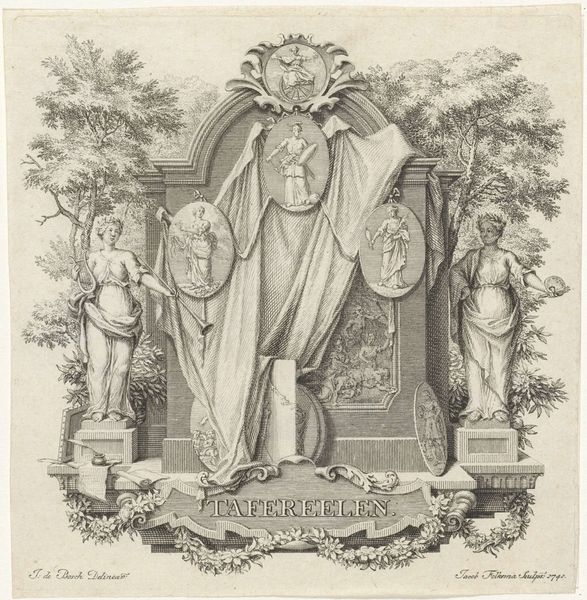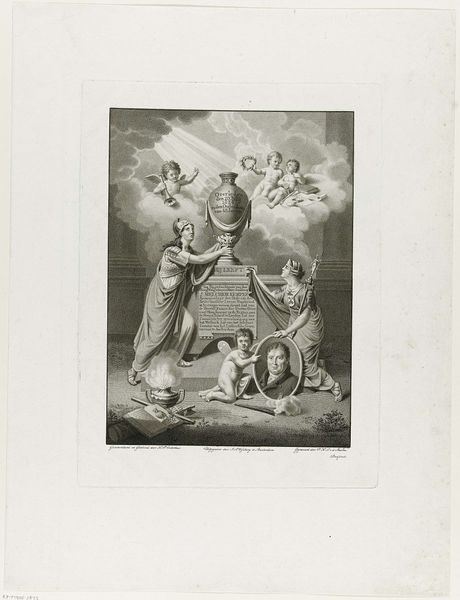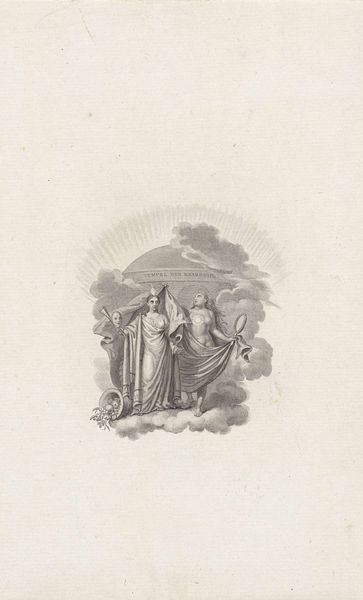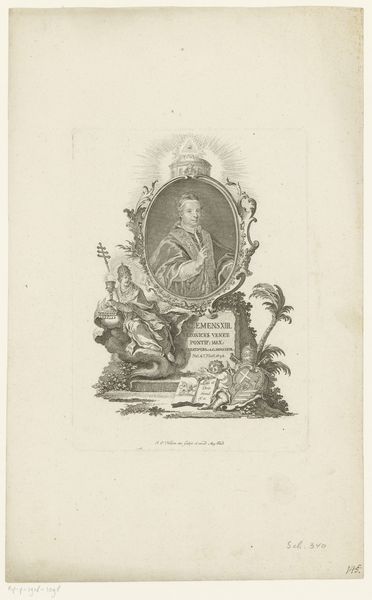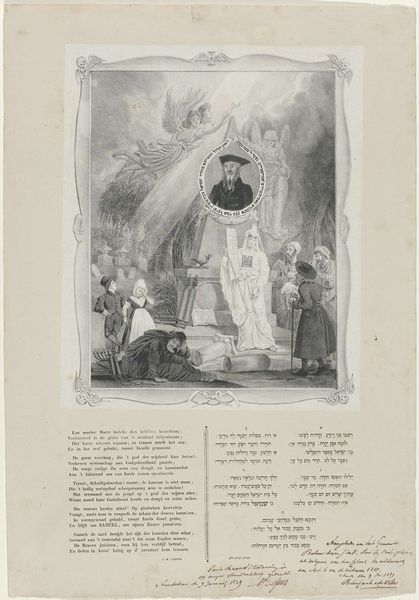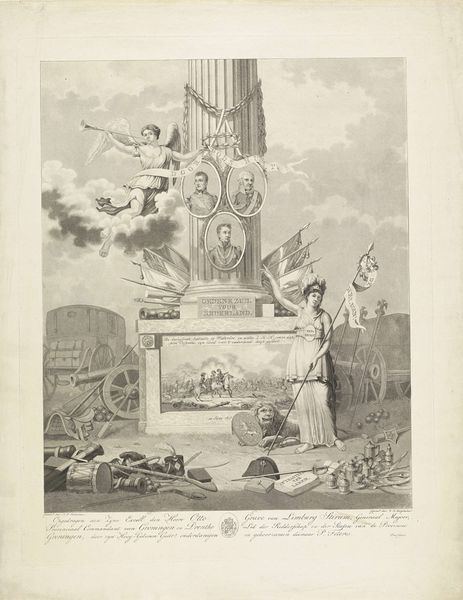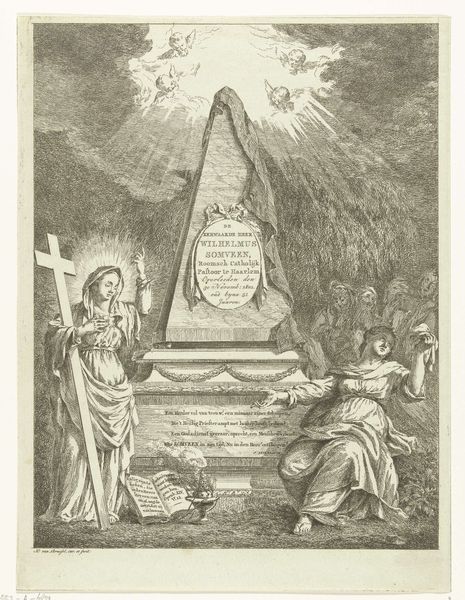
print, engraving
#
portrait
#
allegories
#
allegory
# print
#
old engraving style
#
history-painting
#
academic-art
#
engraving
Dimensions: height 271 mm, width 211 mm
Copyright: Rijks Museum: Open Domain
Curator: Oh, my. It has an air of the deeply considered and ever so slightly performative sadness of mourning. There’s something stiff, but… lovely in the etching’s detail. Editor: Indeed. What we're looking at is "Gedenkteken voor Joost Izaak Cremer," a print from 1807 by Noach van der (II) Meer, currently held at the Rijksmuseum. It’s an engraving, combining portraiture with allegory, quite typical of the period’s academic art style. What social structures were sustained and advanced through these funereal representations, I wonder? Curator: You see that pyramid form, and Cremer's profile in silhouette? It gives me that sense of…striving. Even in death, there’s a formality that suggests the weight of expectation, not just personal grief but societal decorum. The urn atop the pyramid completes it! I’m struck by the light radiating out at the top...an almost unsettling calm. Editor: It's carefully constructed iconography. Note the figure to the left—likely an allegorical representation of grief or mourning. She directs our gaze toward the memorial, solidifying the deceased's importance. The putto to the right perhaps symbolizes divine comfort or the ascent of the soul? What meanings are purposefully elided by framing collective grief as passive spectacle? Curator: Elided? I think it’s more a matter of making the personal profound by clothing it in symbol. The books beneath the memorial hint at Cremer's intellectual life, giving a feeling of a man engaged with his world! It isn’t perfect happiness, of course. But meaningful engagement. Editor: I see also a reflection of patriarchal and colonial values in how grief is ritualized, monumentalized, and made to stand as symbolic evidence of this subject’s achievements and "greatness". Curator: I find, though, that focusing solely on power dynamics flattens the emotional landscape to be just a field of forces acting on us. Looking closer reveals moments of genuine human connection in works like this—expressions of sorrow and a communal grappling with mortality that moves beyond those constraints. Editor: Fair point. Art exists at an intersection of intentional messaging and received, subjective, feeling, right? The historical narrative is, naturally, always more complicated. The engraving certainly gives us much to consider. Curator: Right! Ultimately it reveals to us something not only about the society that created it, but about our very human impulse to remember.
Comments
No comments
Be the first to comment and join the conversation on the ultimate creative platform.
